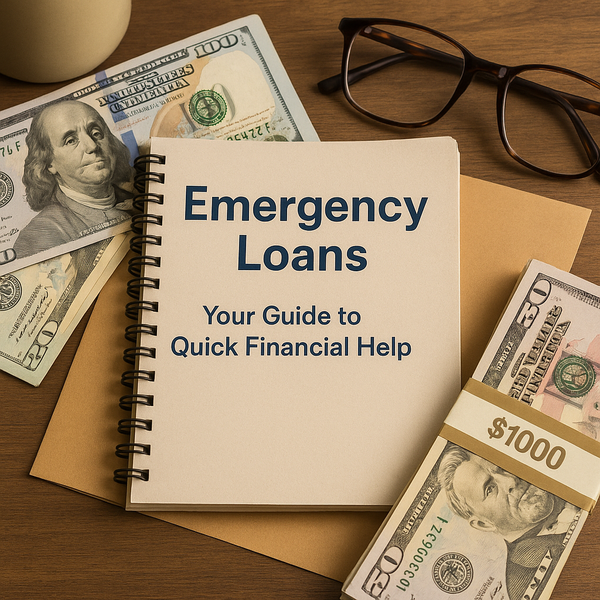
During financial hardships, an emergency loan offers swift relief, helping cover urgent expenses like medical bills or repairs. Unlike traditional loans, they feature faster approval and minimal paperwork, ensuring timely access to funds. These loans can bridge the gap in critical moments, offering peace of mind and stability. When used responsibly, emergency loans are a valuable tool to navigate unexpected financial challenges and regain control over your situation.
What Are Emergency Loans?
Emergency loans are short-term financial solutions designed to provide quick access to funds during unexpected situations. Whether facing medical emergencies, urgent home repairs, or a sudden loss of income, these loans offer timely relief when it’s needed most. Typically easy to qualify for, emergency loans are available through various sources including banks, credit unions, and online lenders. One of their main advantages is the fast approval and disbursement process, often requiring only basic identification and proof of income. This makes them a reliable option for individuals who may not have significant savings or access to other forms of credit. While convenient, it’s important to understand the terms, including interest rates and repayment timelines, to avoid future financial strain. Used responsibly, emergency loans can help bridge short-term gaps and restore financial stability during times of crisis. Always compare lenders and choose one that aligns with your financial situation and repayment ability.
How Do Emergency Loans Work?
Obtaining an emergency loan is often a straightforward process designed to provide quick financial relief during unexpected situations. Typically, it begins with completing an application form—either online or in person—followed by the submission of required documents such as proof of income, identification, and bank statements. Once the lender reviews and approves the application, the loan amount is usually deposited into the borrower’s account, often within the same day or the next business day. However, interest rates and loan terms can vary widely depending on the lender, the applicant’s credit score, and loan amount. It is crucial to research and compare offers to find the most favorable terms. Additionally, borrowers should review the repayment schedule thoroughly to ensure they can meet the obligations without incurring late fees or additional debt. Responsible borrowing, coupled with clear understanding of the loan terms, can help manage short-term financial challenges more effectively.
Pros and Cons of Emergency Loans
Emergency loans provide a fast and convenient solution for individuals facing unexpected financial challenges. One of their main advantages is the speed of access—funds are often disbursed within 24 hours, allowing borrowers to address urgent needs such as medical bills, car repairs, or sudden expenses. The application process is typically simple, with minimal documentation required, making these loans accessible even in stressful situations. However, borrowers should be aware of potential drawbacks. Emergency loans often carry higher interest rates than traditional loans, and missing payments can lead to rapidly accumulating interest and late fees. These additional costs can significantly increase the total repayment amount, potentially causing long-term financial strain. Therefore, it is essential to carefully evaluate your ability to repay before taking out an emergency loan. When used responsibly, they can be a valuable financial tool, but understanding the terms and planning accordingly are key to avoiding further hardship.
Alternatives to Emergency Loans
When an emergency loan isn’t the right fit, several alternative options can help manage financial strain. Borrowing from friends or family may offer flexible terms and little to no interest, but it requires clear communication to avoid misunderstandings or strained relationships. Negotiating payment plans with creditors is another practical approach—many companies are willing to adjust repayment schedules during times of hardship, helping you stay on track without additional fees. Using a credit card with a lower interest rate can also be a short-term solution, especially for urgent expenses, though it’s important to ensure you can repay the balance promptly to avoid long-term debt. Each alternative comes with its own set of benefits and risks, so it’s essential to evaluate your financial situation honestly and consider the long-term impact of your choice. Making an informed decision can reduce stress and provide a manageable path forward during financial emergencies.
Tips for Responsible Borrowing
Responsible borrowing is essential for achieving and maintaining financial stability. It begins with borrowing only what you truly need and ensuring that you can comfortably repay it within the agreed timeframe. Taking on more debt than you can handle can quickly lead to financial strain and long-term consequences. Before committing to a loan, take the time to explore various lenders and compare interest rates, repayment terms, and fees. This helps you make an informed decision and secure the most favorable terms for your situation. Be cautious of lenders that offer quick approvals without evaluating your financial background, as they may hide excessive fees or impose high-interest rates. Understanding the full cost of borrowing—including any penalties or service charges—is vital. By approaching borrowing with awareness and caution, you can use credit as a helpful financial tool rather than a burden. Smart borrowing builds creditworthiness and supports long-term financial health.

